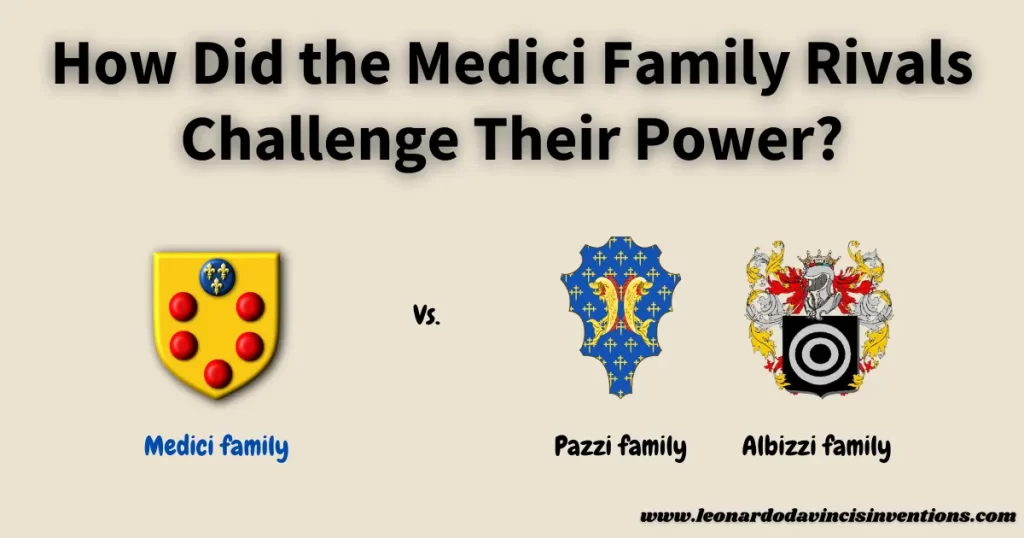
Medici Family Rivals were not just minor obstacles. Their threats shaped the very history of Florence.
Rivals like the Pazzi family tried to disrupt Medici control by plotting conspiracies and using violence to break their grip on the city.
You will learn how these powerful families, including the Pope, joined forces. They used secret plots and bold moves to challenge one of Italy’s most influential dynasties.
From the infamous Pazzi Conspiracy to political pressure in the streets, almost every attempt to take down the Medicis was filled with drama and danger.
The Medicis fought back to defend their power. These stories show how much Medici rivals were willing to end Medici control.
The Rise of the Medici Family and Their Powerful Rivals in Renaissance Florence
The Medici family built their influence in Florence through their banking empire and political skill. They formed close ties with powerful groups.
Political rivals such as the Albizzi and Pazzi families fought for dominance. These rivalries helped shape the city’s government, economy, and society during the Renaissance.
Origins of the Medici Family and Their Banking Empire
The Medici family started as merchants before turning to banking. Giovanni di Bicci de’ Medici established the Medici Bank in the late 1300s.
With careful management and new practices like double-entry bookkeeping, the Medici banking house became one of Europe’s most trusted financial institutions.
Their economic power allowed them to lend to merchants, royalty, and even the Papacy. They built critical political alliances by supporting the papal court and other influential groups.
This wealth and influence set the stage for Medici dominance in Florence and Europe. Their impact on Renaissance art and politics was significant.
Key Rival Families in Florence: The Pazzi and Albizzi
The Medici were not the only powerful family in Florence. The Albizzi family had a significant influence before the rise of the Medici.
They controlled the government for much of the 1300s and saw the Medici as a threat. In 1433, the Albizzi helped exile Cosimo de’ Medici from Florence, showing the dangers of factionalism.
Another primary rival, the Pazzi family, competed fiercely with the Medici for economic and social standing. The Pazzi are best known for the Pazzi Conspiracy in 1478, a plot to assassinate Lorenzo de’ Medici and seize control of Florence.
Although the coup attempt failed, it highlighted the risks and intrigue tied to Florence’s nobility and oligarchy.
Political Rivalry and Influence in the Florentine Republic
Florence was a city-state with a republican government, but a few elite families often decided political leadership. The House of Medici maintained control by forming alliances, buying influence, and serving in key civic offices.
Their strategy involved gaining support from both the merchant class and important guilds. Other rival families, like the Albizzi and Pazzi, used similar tactics to gain power.
Elections, public festivals, and manipulation of laws sometimes became weapons in their struggle for control. Power struggles often led to violence, coups, exiles, or assassination attempts.
Economic Power and Competition Among Banking Families
Renaissance Florence was home to several wealthy banking families. The Medici bank’s international reach gave them an edge, but families like the Strozzi and Pazzi held large fortunes too.
Lending to European royalty and the Papacy made banking risky but influential. Competition extended to trade, property, and investment in art.
Control over economic power meant more than money, leading to land ownership and political influence. The Medici banking house’s success allowed them to become leading patrons of the arts, cementing their prestige.
Rivals sought similar status. To see more about how these families competed.
The Role of Nobility and Social Hierarchy in Medici Dominance
Social hierarchy played a big role in the Medici dominance. Families like the Medici, Albizzi, and Pazzi used noble titles and connections to build alliances with other Italian and European nobles.
Marriage ties and family networks often secured loyalty and formed powerful coalitions. Holding high positions in the Church, including multiple Medici popes, added legitimacy to their rule.
Prestige and patronage helped the Medici attract artists, scholars, and political supporters. These factors allowed them to outmaneuver their rivals and retain influence in Florentine politics.
Consider this overview of the complex power dynamics among leading families for deeper insight into how they managed relationships with rivals and other nobles.
Political Intrigues and Power Struggles Between the Medici Family and Their Rivals
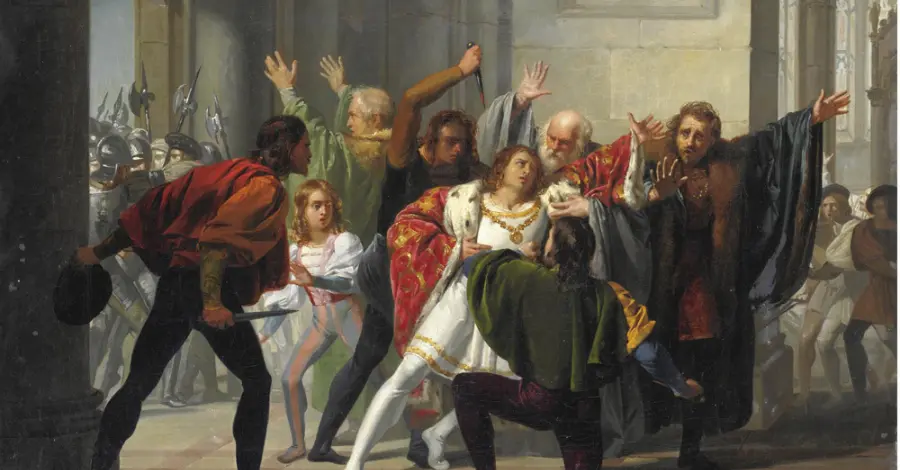
The Medici family’s dominance in Florence sparked intense competition with rival families. Political intrigue, coup attempts, and alliances shifted the balance of power.
The Pazzi Conspiracy: Assassination Attempts and Political Conflict
The Pazzi Conspiracy is a major assassination attempt against the Medici family. The wealthy Pazzi family orchestrated the plot to challenge the Medici banking and political control.
During Easter Mass in 1478, armed men attacked the Medici brothers in Florence’s main cathedral. Giuliano was killed, but Lorenzo escaped.
This assassination attempt led to brutal retaliation by Medici supporters. Dozens of conspirators, including Pazzi family members, were executed, and their wealth was seized.
Factionalism and Coup Attempts in the Florence City-State
Factionalism fueled constant shifts in Florence’s political leadership. The Medici family used wealth from the Medici banking house to build strong alliances.
Another powerful rival, the Albizzi family, led efforts to resist Medici dominance in the early 15th century. During Cosimo de’ Medici’s rise, the Albizzi tried to exile him and regain civic power.
For a short period, Cosimo was exiled, but popular support and alliances with key city factions led to his return. Throughout the Renaissance era, various coup attempts threatened Medici rule.
Urban elites and other banking families, such as the Strozzi and the Pazzi, organized political movements and conspiracies. They aimed to restore a more open Florentine oligarchy.
Medici Rule Versus Rival Families: Battles for Civic Power
The House of Medici faced constant competition from other noble families seeking control of Florence’s government. Major rivals like the Albizzi, Pazzi, and Strozzi families often challenged Medici authority in city councils and public offices.
Control over the position of Gonfaloniere (chief magistrate) and the Signoria (ruling council) became a direct point of conflict. The Medici used their banking wealth to provide patronage, gain loyalty, and sway votes.
Rival families promoted their candidates and formed factions to win political leadership. They accused the Medici of subverting republican values and turning Florence into a dynastic state.
These battles for civic power played out in elections, court cases, and violent street clashes.
Political Alliances and Rivalries Shaping Renaissance Politics
Political alliances were critical during the Renaissance. The Medici family built networks with rulers in Milan, Naples, and Rome, strengthening their influence.
Rival families also formed alliances to counter Medici power. The Pazzi allied with figures in the Papacy and the Kingdom of Naples to plan their conspiracy.
The Albizzi family sought support from powerful Florentine merchants and foreign rulers. Diplomacy and shifting allegiances defined Renaissance politics.
Strategic marriages and treaties fueled or reduced conflict among Florence’s noble families. These alliances, built on common interests and rivalry, shaped the city-state’s future.
Influence of the Papacy and Medici Popes in Power Dynamics
The Medici family’s connections to the Papacy increased their influence in Florence and Italy. By the early 16th century, two Medici popes—Leo X and Clement VII—used their positions to advance Medici rule and family interests.
These popes used Church resources to support Medici heirs and strengthen political alliances. They also intervened in Florentine power struggles.
Medici popes influenced art and culture through significant patronage. Meanwhile, rivalry with other Florentine families persisted, as they saw Medici papal power as a direct threat to the republic and their ambitions.
Papal influence played a key role in dynastic struggles, showing how politics, the church, and family competed for control in Renaissance Florence.
Legacy and Impact of Medici Family Rivals on Florence’s Art, Culture, and Politics
Medici rivals shaped the city of Florence through economic competition, political schemes, and patronage of the arts. The House of Medici fought off challenges from powerful families whose actions influenced Florence’s history during the Renaissance.
Medici Patronage of the Arts Amid Rivalry and Political Turmoil
Medici family patronage of art flourished even as rival groups like the Albizzi and Pazzi families plotted against them. During periods of political turmoil, leaders such as Cosimo de’ Medici commissioned works from artists like Donatello and Fra Angelico to reinforce civic pride and Medici dominance.
The family used art to send messages of power and security, even as assassination attempts and coup plots threatened their position. Artists often found themselves caught between competing nobles, and their reputations depended on their patrons’ fortunes.
Political rivals also commissioned art to display wealth and prestige. This led to vibrant artistic competition across Florence.
This environment helped make Florence a center of Renaissance art and culture that rivaled any European city.
How Rival Families Shaped the Florentine Oligarchy and Governance
In the Florentine Republic, rival families such as the Albizzi and Pazzi often formed alliances and factions to counter Medici influence. These political rivals held public office and used their positions to change laws or policy for their benefit.
The Medici responded with their political moves. Sometimes they exiled rivals or made alliances with the papacy.
The Medici’s struggle for power with their opponents transformed Florence from a republic to an oligarchy. Only a few elite families decided on government policy.
Over time, Florence’s government became a battleground for factionalism and political intrigue. Power struggles between ruling families created cycles of reform and repression.
The Florentine people often found themselves caught in the middle of these conflicts.
Dynastic Struggles and the Restoration of Medici Power
Dynastic struggles marked much of Florence’s history during the Renaissance. The Medici rule faced repeated challenges, such as the Pazzi Conspiracy—a failed plot to assassinate Lorenzo de’ Medici—and rebellions that led to Medici exiles.
Rival families led periods of political experimentation after each Medici expulsion. The Medici often returned through alliances or foreign support.
Their restoration usually brought harsh retribution against former opponents. These cycles left lasting tension among Florence’s nobility.
Frequent shifts in power shaped both city policies and Florence’s civic identity.
Trade, Wealth, and the Financial Empire Behind Medici Influence
Medici banking created the foundation of their influence. Rival banking families in Florence and international trading partners often threatened their financial empire.
Families like the Bardi and Peruzzi once dominated banking and trade before the Medici rose to power.
Competition in banking led to business innovation and political conflict. Financial power often became civic power.
The Medici banking house became essential to the papacy and European monarchs. They used their wealth to broker alliances and increase their authority in Florence.
Trade rivalry among Florence’s top families helped the region become an economic powerhouse, but this rivalry also raised the stakes of each political crisis.
The Enduring Family Legacy of Medici Heirs and Their Rivals
The Medici family and their rivals left a legacy that still shapes Florence today. Their competition led to advancements in art and architecture and changes in social hierarchy.
Generations of Medici heirs continued to assert their dominance. Contributions from rival families and their supporters in banking, politics, or culture also helped define the city’s unique character.
The interplay of these families contributed to Florence’s rise as a significant force in European history and Renaissance politics.
Frequently Asked Questions
The Medici family faced challenges from banking competitors, powerful noble houses, and political enemies in Florence and beyond. Key rivalries shaped Florentine politics, religion, and violence during the Renaissance era.
Who were the rivals of the Medici?
The Medici family’s main rivals included the Pazzi, Albizzi, and Strozzi families. The Pazzi were best known for their direct attacks against the Medici, while the Albizzi and Strozzi challenged them through politics and business.
Who was the enemy of the Medici family?
The Medici’s most well-known enemy was the Pazzi family. They were involved in the Pazzi Conspiracy, in which they tried to kill Lorenzo and Giuliano de’ Medici.
Did you have a rivalry with the Medici family?
The Pazzi family, the Albizzi, and the Strozzi fiercely competed with the Medici for power in Florence. Each used their wealth and connections to try to undermine the Medici’s influence.
What families are similar to the Medici?
Families like the Este of Ferrara, the Sforza of Milan, and the Gonzaga of Mantua had similar roles in their cities as wealthy, powerful dynasties with influence over art and politics—these families, like the Medici, mixed business success with political power.
Why did Italy hate the Medicis?
Many in Italy saw the Medici as greedy bankers who put themselves above the city’s needs. Their stronghold over Florence sometimes appeared unfair to outsiders and rival citizens.
Which family was the biggest rival of the de Medici family in Renaissance Italy?
Regarding open opposition and physical danger, the Pazzi family was the Medici’s biggest rival in Renaissance Florence. Their actions led to the famous Pazzi Conspiracy against Lorenzo.
Why did Pazzi hate Medici?
The Pazzi disliked the Medici mainly because of business competition in banking and for political control of Florence. When the Medici gained more power, the Pazzi lost influence in the city.
Who betrayed the Medici family?
Some members of the clergy and nobles in Florence and Pope Sixtus IV supported efforts like the Pazzi Conspiracy to betray the Medici and remove them from leadership.
Does the Pazzi family still exist?
The Pazzi family as a powerful political force does not exist today. Some family descendants continue to live in Italy but no longer hold any special rank or status.
Who overthrew the Medici family?
Florentine citizens exiled the Medici more than once because they wanted to restore a republic.
Families like the Albizzi and reformers in Florence led groups that overthrew the Medici at different times until the Medici eventually returned.
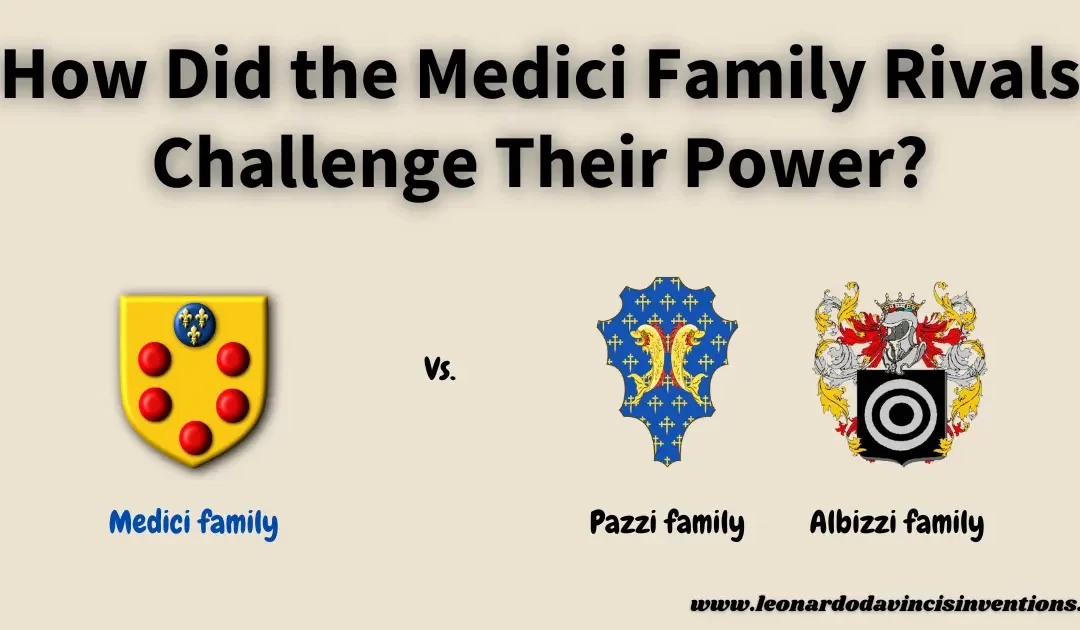
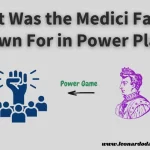

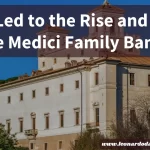

 Leonardo Bianchi,
the creator of Leonardo da Vinci's Inventions.
Thank you for visiting
Leonardo Bianchi,
the creator of Leonardo da Vinci's Inventions.
Thank you for visiting